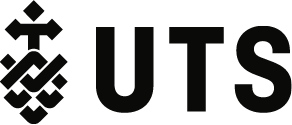On June 20th, as a bright, crisp (-7 degrees!) day dawned at the University of Canberra, WIL Australia (formerly ACEN) held its WIL Summit. This proved to be more than just a gathering – it fostered conversations, sparked ideas and forged partnerships between a diverse group of WIL champions from NSW and ACT.
The day’s theme – Creative, Modern and Celebrating WIL – was structured around presentations and networking. A lively icebreaker had us on our feet and discovering each other’s commonalities (our group all had a love of coffee and art), but it soon became clear we were a diverse bunch.
Keeping up with GenAI
For the first presentation, A/Professor Bonnie Dean and Dr Laura Rook from the University of Wollongong discussed GenAI and WIL.
Early research in a non-placement WIL project showed that most students recognised there was value in mastering Gen AI tools for future careers. There was some lively discussion, particularly around students confronting security, misconduct and ethical issues with the use of GenAI in the workplace. It became clear that many students had used their own GenAI tools on placement, and most purported to have put private information into GenAI tools.
It was widely agreed that both external partners and the higher education sector are still lagging in preparing students adequately for ethical discussions and decision-making regarding GenAI. The boundaries and expectations haven’t been sufficiently set. Chris Dennis, a participant in my discussion group, suggested the dilemma is not unlike taking a floppy disc home from work 20 years ago. This action would be a security breach that would have been made clear to work experience students, but it doesn’t seem to place the same sense of high stakes on the use of personal GenAI tools in 2025. As GenAI use is unavoidable in WIL, both students and staff need institutional parameters and support.
It was important to ascertain from industries and other partners hosting students how they use GenAI, what the tools are, and what is the appropriate use of them in the placement. This might be preceded by a scan of the accreditation competencies for that industry to ascertain if any refer to the use of GenAI.
In our discussion groups, we used the CRADLE resource for GenAI in Work Integrated learning to suggest ways we might open the conversation with students and industry partners about setting guidelines on ethical use of GenAI and the relevance of its use for future careers.
You can read more about how we can prepare students for a GenAI workplace in this paper from Franziska Trede and hear from industry experts on how we students can make the next step in their GenAI-engaged career in these ATN National Symposium highlights.
Creative solutions to the WIL placement dilemma
For the second presentation, Tanya Lawliss and Thomas Bevitt focused on faculty challenges when trying to find placements for students to gain professional experience. The University of Canberra’s Faculty of Health suffered placement site burnout due to limited supervisors and capacity. Inevitably, new graduates were becoming supervisors prematurely due to staffing shortages in the workplace. Students also reported financial hardships and loneliness on placement, and inequity around access to suitable placements.
Faced with these challenges, the university decided to be more creative with placement structures. They combined part-time work experience with non-placement industry projects and other creative ideas using Matthew Hillier’s 2023 AI Literacy framework. This redesign from burden to benefit sought to identify industry challenges and gaps, to understand organisations, and to reinvent what a student placement looked like.
Following this, the attending group were inspired to share the creative WIL opportunities from the represented universities, as well as other ideas across the sector. We were able to cite examples from UTS like Startups, Shopfront, Optik Consultancy and the Sport & Exercise Science Telepractice Clinic.
As the summit ended, attendees left inspired and armed with innovative ideas for uplifting student WIL experience pathways. The event underscored the critical role of work-integrated learning in shaping the future of higher education and preparing students for a rapidly evolving workforce.
Next in WIL: the UTS WIL Symposium
Join our Teams space to stay up to date with the latest events – the next WILN@UTS Zoom meeting on 7 August focuses on how students engage with the good use of GenAI tools in their professional practices:
And don’t forget to register for the next 2025 UTS Work Integrated Learning Symposium. Once again hosted at the UTS Rugby Australia Building, this year’s event is dedicated to strengthening WIL and paving the way for future professionals whilst addressing industry trends.

Thanks for representing UTS and the update. So great to hear about what other universities are doing. Looking forward to the UTS summit!